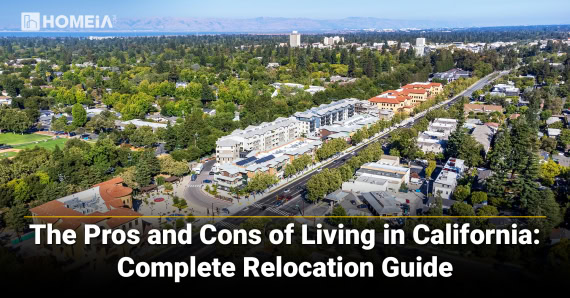Moving to California: The Complete Relocation Guide & Checklist
- Local Editor:Local Editor: Christopher Gorrie
Published: Jul 22, 2025
- Category: California , City Living Guide
Thinking about relocating to California? You’ll be alongside hundreds of thousands of people who move to the Golden State each year, drawn by its world-class innovation, cultural diversity, and breathtaking natural beauty. With a sizable economy, broad job market, and lifestyle as dynamic as its scenery, California offers enticing reasons for families, young professionals, retirees, and businesses relocating from other states to call it home.
This comprehensive California moving guide and relocation checklist covers need-to-know essentials before making your out-of-state move—from cost of living comparisons and job market insights to step-by-step moving timelines and the best cities to live in California. Whether you’re considering the tech hub of Silicon Valley, Los Angeles’s entertainment industry, San Diego’s coastal lifestyle, or Sacramento’s family-friendly atmosphere, we’ll help you make an informed decision about your California relocation and long-distance move to the West Coast.
Mission Table: How This Guide Helps You Relocate to California
| Mission Area | How This Guide Supports You |
| Research & Planning | Comprehensive city-by-city profiles, cost of living data, and moving timelines for your California move |
| Financial Preparedness | Budgeting, savings, and financial adjustment strategies for California’s unique challenges |
| Legal & Documentation | California residency, vehicle registration, and essential documentation requirements |
| Community Integration | Building social networks, joining local groups, and settling into your new California community |
| Ongoing Support | FAQs, resources, and checklists for every stage of your interstate relocation |
10 Cheapest Places to Live in California
We assessed the cost of living across Californian cities and compared them to the national average. The cost of living is calculated based on 5 main categories: housing, food, healthcare, transportation and energy. Based on these calculations, we narrowed down the list to California’s 10 most affordable cities…
Table of Contents:
- 1. What Is It Really Like to Live in California?
- 2. Cost of Living & Affordability in California
- 3. Jobs, Economy, and Career Opportunities
- 4. Education Excellence in California
- 5. California Tax Structure
- 6. Best Places to Live in California: City-by-City Guide
- 7. Planning Your California Move: Step-by-Step Timeline
- A. 8-12 Weeks Before: Research and Financial Planning
- B. 6-8 Weeks Before: Documentation and Logistics
- C. 2-4 Weeks-Moving Day: Final Preparations
- D. After Arrival: Essential Settlement Tasks
- => Get the Relocation Guide & Checklist PDF — prepared for both Desktop and Mobile devices.
- California Vehicle Registration, Driver’s License & Voting Requirements for New Residents
- 8. Settling In: Practical Essentials
- 9. California’s Unique Rules and Requirements
- 10. Financial Adjustment and Budgeting
- Frequently Asked Questions About Moving to California
1. What Is It Really Like to Live in California?

A. California Culture & Lifestyle
Living in California is a unique blend of innovation, diversity, and a contemporary vibe that creates one of America’s most distinctive regional identities for newcomers seeking the California dream. Influences from Hispanic, Native American, European, African American, and Asian communities shape everything from language and cuisine to art, architecture, and social customs. Californians are known for openness, creativity, and progressive values—neighbors are often sociable, and newcomers relocating to California can readily insert themselves into established social networks.
The California lifestyle balances metropolitan sophistication with outdoor adventure in ways few other states can match for families moving to California for better weather and work-life balance. Whether you’re living in major metropolitan areas like Los Angeles or San Francisco, or smaller coastal communities, you’ll discover a distinctive blend of urban amenities and natural beauty that defines modern California living.
B. Food Scene: Farm-to-Table, Fusion, and More
California cuisine is legendary for good reason and represents a major draw for newcomers seeking authentic culinary experiences. The farm-to-table movement thrives here, with fresh, local, and sustainable ingredients featured in everything from Michelin-starred restaurants to neighborhood farmers’ markets. From San Francisco’s innovative food scene to Los Angeles’s legendary taco trucks and San Diego’s craft breweries, California offers culinary experiences spanning every price point and taste preference.
The 10 Best Places to Live in San Diego, California (2025)
For a more family-oriented environment, Carmel Valley’s excellent schools and parks stood out. Each area in San Diego has its unique appeal, making it easy to find the perfect place to call home…
C. Outdoor Life & Recreation
With nine national parks, hundreds of state parks, and a stunning coastline, California is a haven for outdoor enthusiasts offering year-round recreation opportunities across incredibly diverse landscapes. You can hike through Yosemite’s granite cliffs, surf along the Pacific Coast, or ski in the Sierra Nevada mountains. The state’s diverse geography means outdoor enthusiasts can experience coastal beaches, towering mountains, expansive deserts, and lush forests—all within California borders. No mention of California’s attractions would be complete without its various theme parks, from major attractions in the L.A. Basin, to lesser known parks in the central California region, as well as campgrounds and retreats spread throughout the central and northern regions.
D. Weather & Climate
California weather varies significantly by region and newcomers should prepare for varying weather conditions throughout the state.
| Region | Summer High | Winter Low | Annual Rainfall | Main Weather Concerns |
| Coastal (SF Bay) | 70-75°F | 45-50°F | 20-25 inches | Fog, mild temperatures |
| Coastal (LA/SD) | 75-85°F | 50-60°F | 10-15 inches | Minimal rainfall, fires |
| Central Valley | 90-100°F | 35-45°F | 10-20 inches | Heat waves, agricultural smog |
| Mountains | 70-85°F | 20-35°F | 30-50 inches | Snow, fire risk |
| Desert | 100-115°F | 40-50°F | 3-10 inches | Extreme heat, flash floods |
Severe weather events require preparation including wildfires, earthquakes, and droughts. Emergency preparedness is essential for all residents, with alert systems and community preparedness programs helping residents stay safe.
10 Best Places to Live in Southern California in 2025
HOMEiA is here to help you explore ten of the best places to live in Southern California. Each place has its own charm and unique qualities. Let’s take a quick dive into what Southern California has to offer! Here’re 10 best places to live in Southern California…
2. Cost of Living & Affordability in California

California cost of living is approximately 48% higher than the national average, making financial planning essential for newcomers and particularly important for those moving from lower-cost states to the West Coast. This affordability challenge, combined with California’s progressive state income tax policy, creates unique financial considerations for residents across all income levels.
A. Housing Market Overview
California housing market is among the most expensive in the nation with significant regional variations throughout California real estate markets and home prices that challenge newcomers. The statewide median home price stands at approximately $909,400, far exceeding the national median of $357,000.
City/Region | Median Home Price | 1BR Rent | 2BR Rent (Apt) | 3BR Rent (House) |
|---|---|---|---|---|
| San Francisco | $1,200,000+ | $2,904 | $4,175 | ~$5,500 |
| Los Angeles | $900,000+ | $2,488 | $3,319 | $5,151 |
| San Diego | $850,000+ | $2,438 | $3,313 | $4,516 |
| Sacramento | $500,000+ | $1,770 | $2,091 | $2,641 |
| San Jose | $1,400,000+ | $2,658 | $3,524 | $4,115 |
| Fresno | $350,000+ | $1,429 | $1,675 | $2,293 |
Notes: The average monthly rent for all property types in California is $2,750, with a 2-bedroom apartment averaging $2,791. Rental costs represent a significant factor when calculating the cost of moving to California from other states.
B. Utilities and Daily Expenses
Utility costs in California are generally higher than the national average, driven by the state’s commitment to renewable energy and strict environmental regulations.
Expense Category | California Average | National Average | % Difference |
|---|---|---|---|
| Electricity | $0.30/kWh | $0.17/kWh | +76% |
| Water | $75-125/month | $50-75/month | +50% |
| Groceries (monthly) | $350-450 (single) | $300 (single) | +15% |
| Gas (per gallon) | $4.50-5.00 | $3.10 | +45% |
| Car Insurance | $180-250/month | $168/month | +25% |
Groceries cost about 10% more than the U.S. average but most grocery items are exempt from sales tax, providing some relief. Transportation costs are higher than national averages, with gas prices averaging $4.50–$5.00 per gallon.
Recommended for you
3. Jobs, Economy, and Career Opportunities

California’s economy is the largest in the United States with a GDP of over $3.7 trillion and projected to add hundreds of thousands of new jobs, making it an attractive destination for professionals across industries and those seeking California jobs for out of state workers and remote work opportunities.
A. Major Industries and Employment Sectors
California offers diverse career opportunities across multiple high-growth industries with competitive compensation packages.
Industry | Key Employers | Average Salary ($) | Job Growth Rate | Major Locations |
|---|---|---|---|---|
| Technology | Apple, Google, Meta, Tesla | 165,000 | 15.2% | Silicon Valley, SF |
| Entertainment | Disney, Warner Bros., Netflix | 95,000 | 8.5% | Los Angeles |
| Healthcare | Kaiser, UCSF, Cedars-Sinai | 105,000 | 12.3% | Statewide |
| Aerospace | SpaceX, Boeing, Northrop | 115,000 | 6.8% | LA, San Diego |
| Green Energy | Tesla, SunPower, First Solar | 85,000 | 18.5% | Bay Area, Central Valley |
| Biotech | Genentech, Gilead, Amgen | 135,000 | 14.2% | Bay Area, San Diego |
B. Metropolitan Job Markets
San Francisco Bay Area’s technology sector continues expanding with major companies and startup ecosystems thriving throughout the region, making it one of the best places in California for tech workers and software engineers. Los Angeles entertainment industry serves as the global capital for film, television, and digital media, providing opportunities for those moving to Los Angeles for entertainment careers and Hollywood jobs. San Diego’s biotech corridor accommodates both life sciences innovation and military and defense contractors, while the region’s attractive climate draws in professionals across industries.
The Pros and Cons of Living in California: Complete Relocation Guide 2025
In this article, we cover the Pros and Cons of living in California and explore the top cities for various demographic groups. We also provide plenty of insights to help you ease the relocation process and find your perfect destination in California…
4. Education Excellence in California
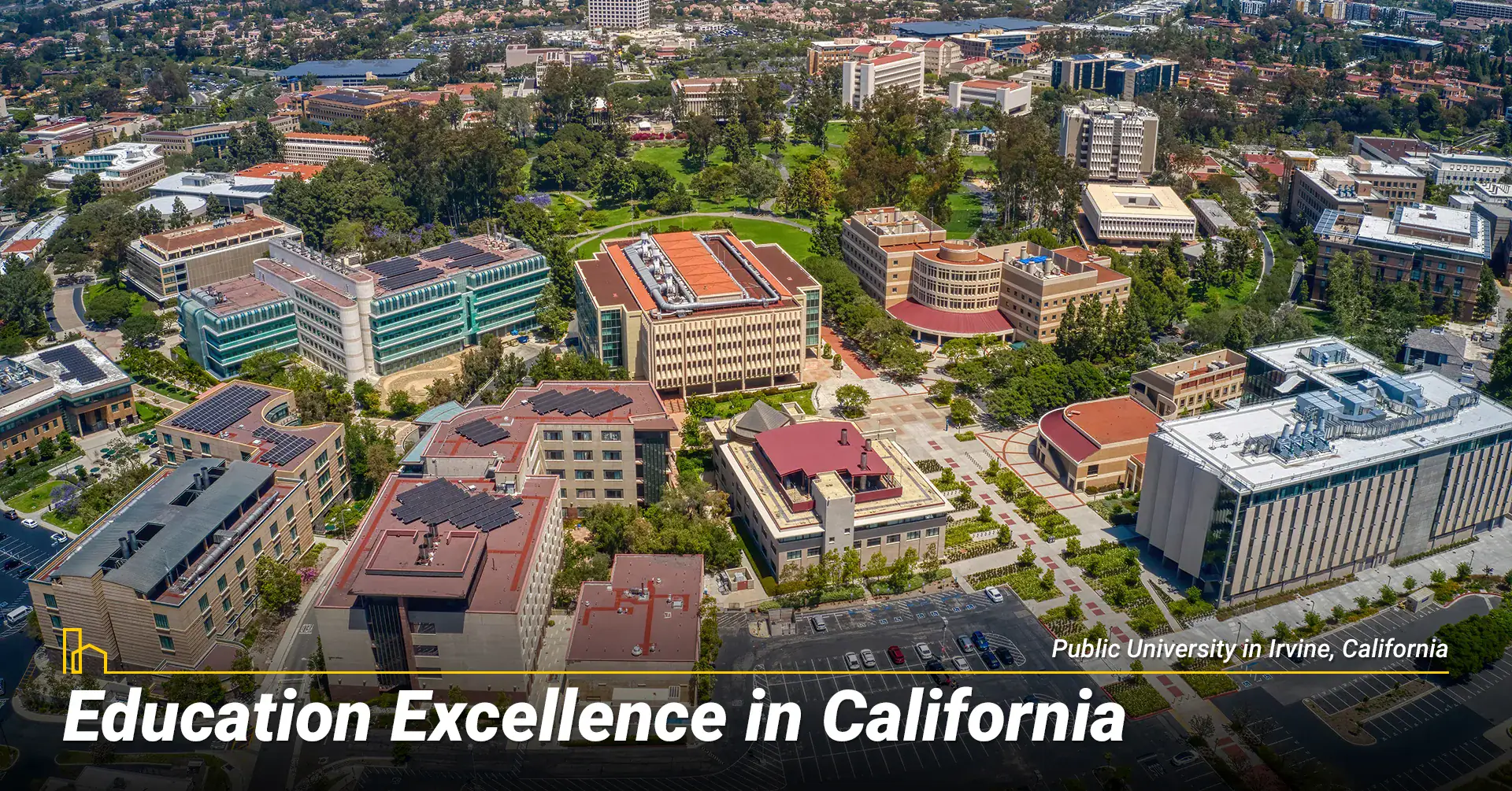
California offers many-tiered educational opportunities, from some of the top-rated public school districts to many prestigious universities, making the state attractive for families prioritizing education quality.
A. Public School System Performance
California’s public school system is the largest in the nation, serving over 6 million students with performance varying by district.
School District | Location | Students | API Score | College Readiness |
|---|---|---|---|---|
| Palo Alto Unified | Bay Area | 12,000 | 950+ | 95% |
| Irvine Unified | Orange County | 36,000 | 925+ | 92% |
| San Ramon Valley USD | Bay Area | 31,000 | 900+ | 90% |
| Capistrano USD | Orange County | 51,000 | 870+ | 85% |
B. Higher Education Institutions
California hosts world-renowned universities, including UC Berkeley, UCLA, Stanford, and Caltech. The UC system serves 285,000+ students, while the CSU system is the largest public university system in the US with 485,000+ students. Community colleges provide affordable pathways to four-year degrees throughout the state.
The 7 Best Cities to Live in California
For those looking at California as a potential home base, there are a variety of considerations to make when weighing a decision. Some may value safety and community, while others could not care less and just want to club all night. More factors like climate, recreation, and, certainly for most, proximity to the sea will be major considerations…
5. California Tax Structure
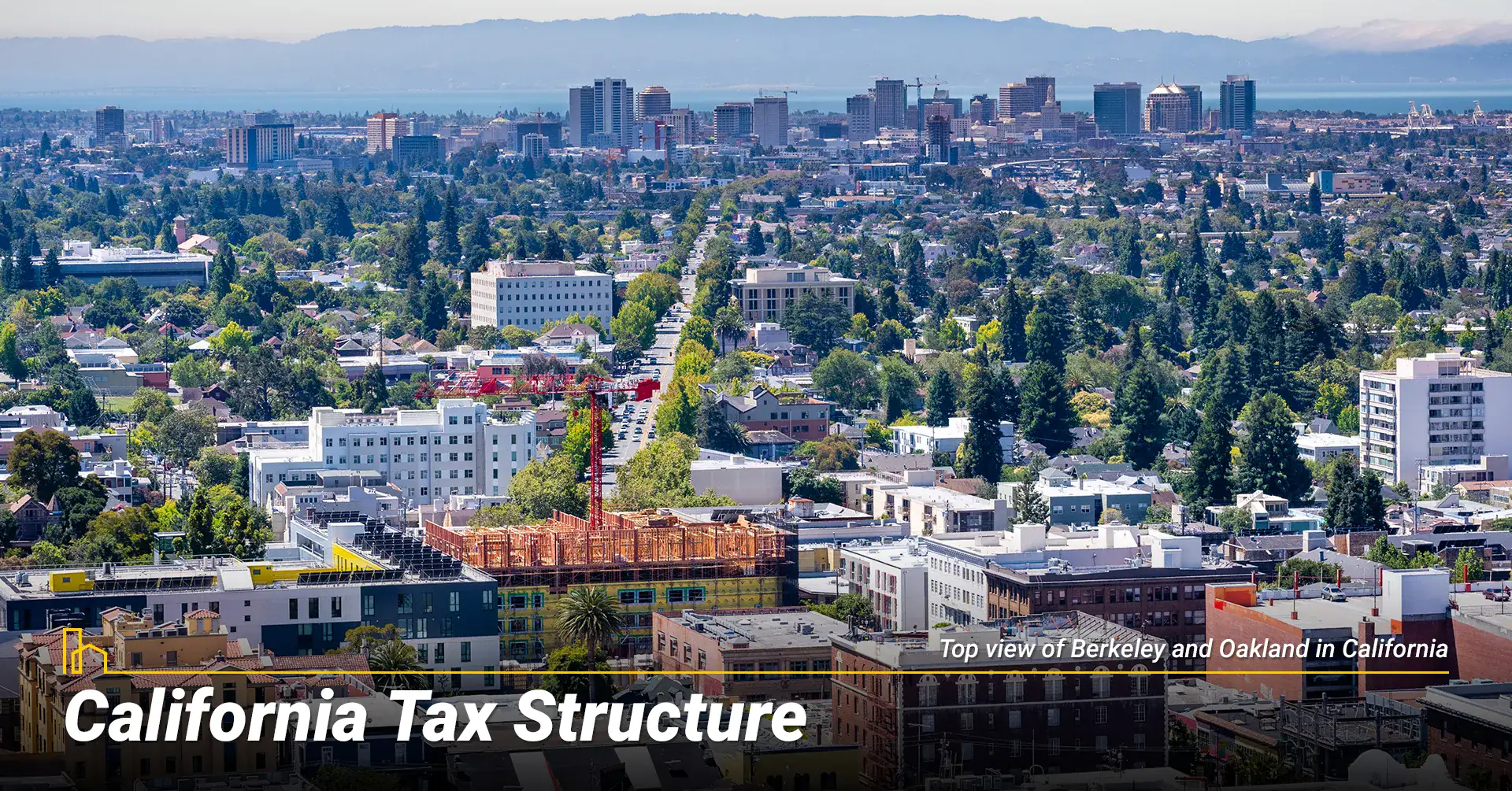
California has a progressive state income tax system with rates ranging from 1% to 13.3% for high earners, making California vs. Texas and Florida tax comparisons important considerations for those planning interstate moves from no-tax states.
A. Tax Structure Overview
Tax Type | California Rate | National Average | What’s Taxed |
|---|---|---|---|
| State Income Tax | 1%-13.3% | 5.1% | All income |
| Sales Tax | 7.25% base + local | 6.35% | Most goods/services |
| Property Tax | ~1.75% effective | 1.07% | Real estate, vehicles |
B. Financial Impact Analysis
High earners may pay significantly more in California state income taxes compared to no-income-tax states like Texas and Florida, often paying $10,000-$30,000 annually depending on income levels. However, California’s robust public services—including education, healthcare, and infrastructure—are funded by these revenues, providing value for residents.
Recommended for you
6. Best Places to Live in California: City-by-City Guide
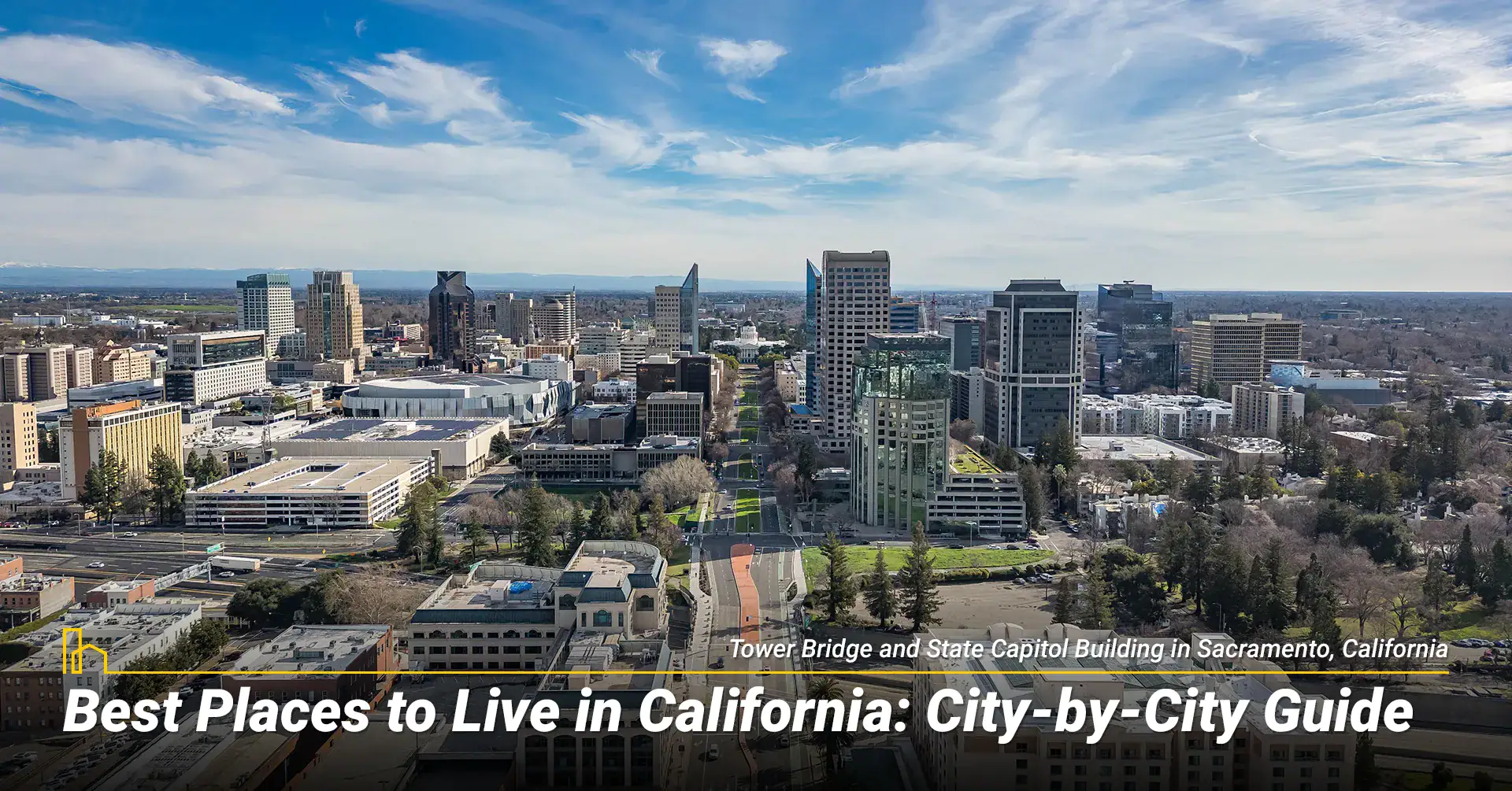
A. San Francisco: Technology Innovation and Cultural Hub
San Francisco combines technological innovation with cultural vibrancy, earning its reputation as a global tech capital while attracting young professionals seeking dynamic urban living. Advantages include strong job market with average tech salaries exceeding $165,000, cultural diversity, excellent public transportation, and access to outdoor recreation. Considerations include extremely high housing costs with median home prices exceeding $1.2 million, traffic congestion, and high overall cost of living.
B. Los Angeles: Entertainment Capital and Lifestyle Destination
Los Angeles is the heart of the entertainment industry, offering a dynamic mix of cultural attractions, world-class dining, and outdoor activities for those moving to Los Angeles for career opportunities in sunny California. Advantages include entertainment industry jobs, cultural diversity, year-round sunshine, and access to beaches and mountains. Considerations include high housing costs, significant traffic congestion, and sprawling geography requiring reliable transportation.
C. San Diego: Coastal Living and Biotech Hub
San Diego offers exceptional quality of life with its beautiful coastline, mild year-round climate, and thriving biotech and military sectors. Advantages include ideal weather with temperatures ranging from 60-75°F year-round, strong job market in biotechnology, excellent schools, and access to pristine beaches. Considerations include high housing costs, limited public transit, and growing traffic congestion.
D. Sacramento: Affordable Capital with Growing Opportunities
Sacramento provides an affordable alternative to coastal cities, making it one of the cheapest places to live in California relative to other major cities. Advantages include affordable housing with median prices around $500,000, growing economy with stable government employment, and access to outdoor recreation including Lake Tahoe. Considerations include hot, dry summers often exceeding 100°F and limited cultural attractions compared to larger cities.
E. San Jose: Tech Innovation and Suburban Living
San Jose is the heart of Silicon Valley, offering high-paying tech jobs and suburban lifestyle for families. Advantages include highest salaries in the nation with average tech wages exceeding $150,000, excellent schools, and safe neighborhoods. Considerations include extremely high housing costs with median home prices exceeding $1.4 million and high overall cost of living.
7 Cheapest Places to Live in Southern California
Looking for the cheapest places to live in Southern California? This guide highlights seven cities near Los Angeles that offer affordable housing, low living costs, and great amenities. Whether you’re a first-time buyer, retiree, or remote worker, these budget-friendly communities provide quality of life without the typical SoCal price tag…
7. Planning Your California Move: Step-by-Step Timeline

A. 8-12 Weeks Before: Research and Financial Planning
Comprehensive research forms the foundation of successful California relocation. Research California cities matching your lifestyle and career goals, investigate neighborhoods, and calculate complete moving to California costs including professional long-distance moving services.
Type of Move | 1 Bedroom | 2-3 Bedrooms | 4-5 Bedrooms |
|---|---|---|---|
| DIY/Truck Rental | $800–$3,200 | $1,200–$5,500 | $2,000–$7,500 |
| Moving Container | $1,200–$4,000 | $2,000–$6,500 | $3,500–$10,000 |
| Full Service | $2,500–$8,000 | $4,000–$12,000 | $6,000–$18,000 |
B. 6-8 Weeks Before: Documentation and Logistics
Gather essential documents including birth certificates, medical records, school transcripts, insurance policies, and financial records needed for establishing California residency. Begin packing systematically, schedule utility connections, and arrange pet transportation for your interstate relocation to California.
C. 2-4 Weeks-Moving Day: Final Preparations
Complete final arrangements including confirming moving company details, preparing essentials boxes, and cleaning your current residence. On moving day, conduct thorough walkthroughs and maintain organization with important documents during your cross-country travel to California.
D. After Arrival: Essential Settlement Tasks
Complete immediate California residency requirements including registering vehicles within 20 days, applying for California driver’s license within 10 days, registering to vote, enrolling children in California schools, and updating addresses with financial institutions.
=> Get the Relocation Guide & Checklist PDF — prepared for both Desktop and Mobile devices.
California Vehicle Registration, Driver’s License & Voting Requirements for New Residents
Moving to California? This comprehensive guide covers everything new residents need to know about all things vehicle; from registration and driver’s license transfer to the associated voter registration requirements, deadlines, and fees.
1. Quick Reference: Important Deadlines for California New Residents
Requirement | Deadline | Consequences of Missing |
|---|---|---|
| Vehicle Registration | 20 days after establishing residency | Fines and penalties |
| Driver’s License Transfer | 10 days after establishing residency | Traffic citations, insurance issues |
| Voter Registration | 15 days before election (or same-day) | Cannot vote in upcoming election |
2. How to Register Your Out-of-State Vehicle in California
A. California Vehicle Registration Timeline and Requirements
When you become an in-state resident you must register your out-of-state vehicle with the California Department of Motor Vehicles (DMV) within 20 days of establishing residency.
What Establishes California Residency?
California residency is established through actions such as:
- Starting employment in California
- Signing a lease or purchasing a home
- Enrolling children in a school
- Registering to vote in the state
B. Required Documents for California Vehicle Registration
Before visiting the DMV, gather these essential documents:
Mandatory Documents:
- Form REG 343 (Application for Title or Registration)
- Out-of-state title or registration certificate
- Proof of in-state auto insurance
- Valid smog certificate (if required for your vehicle)
- Payment for registration fees
C. California Vehicle Registration Fees (2025)
Understanding the costs involved helps you budget for your move:
Fee Type | Amount (2025) | Description |
|---|---|---|
| Registration Fee | $65 | Standard DMV processing fee |
| CHP Fee | $28 | California Highway Patrol fee |
| Vehicle License Fee (VLF) | 0.65% of vehicle value | Based on current market value |
| Transportation Improvement Fee | $25–$175 | Varies by county |
| County/Local Fees | $7–$50+ | Location-dependent charges |
| Use Tax | Varies | Only if owned less than 1 year |
D. California Smog Check Requirements
Vehicles That Need Smog Checks:
- Gasoline vehicles: 1976 model year and newer
- Diesel vehicles: 1998 model year and newer (under 14,000 lbs GVWR)
Smog Check Exemptions:
- Electric vehicles (EVs)
- Some new vehicles (first 8 years)
- Certain hybrid vehicles
Pro Tip: Get your smog check done before visiting the DMV to avoid multiple trips.
12 Key Factors to Know About Living in Los Angeles
If living in Los Angeles (or LA) is your reason for considering relocating to California, you will find a lot to love in this sunny, warm, sprawling, diverse city. In this article, we will give you a feel for L.A.’s standard of living, climate, housing, education and more. Below are top 12 key things to know about living in Los Angeles…
3. How to Transfer Your Driver’s License to California
A. California Driver’s License Transfer Deadline
New California residents must apply for an in-state driver’s license within 10 days of establishing residency.
B. Step-by-Step California Driver’s License Process
- Complete Online Application
- Visit the California DMV website
- Fill out the driver’s license application
- Schedule DMV Appointment
- Book online to avoid long wait times
- Bring all required documents
- Visit DMV Office
- Surrender your out-of-state license
- Present required documentation
- Choose between REAL ID or Standard license
- Complete Required Tests
- Vision test (mandatory)
- Written knowledge test (mandatory)
- Driving test (usually waived for valid out-of-state licenses)
- Pay License Fee
- Class C license fee: $45 (2025)
C. Required Documents for California Driver’s License
Identity and Legal Presence:
- Valid out-of-state driver’s license
- US passport or certified birth certificate
- Social Security Number verification
California Residency Proof (2 documents required):
- Utility bills (gas, electric, water, phone)
- Lease agreement or mortgage documents
- Bank statements
- Employment documents
D. REAL ID vs. Standard California Driver’s License
- REAL ID: Required for domestic flights after May 7, 2025
- Standard License: Cannot be used for federal identification purposes
- Cost: Same fee applies to both options
4. California Voter Registration Guide
A. California Voter Registration Requirements
To register to vote in California, you must:
- Be a US citizen
- Reside in the state
- Be 18 years old by Election Day
- Not currently serving a state or federal prison term for a felony conviction
- Not currently found mentally incompetent by a court
B. California Voter Registration Deadlines
Registration Type | Deadline | Where to Register |
|---|---|---|
| Regular Registration | 15 days before election | Online, by mail, or in person |
| Same-Day Registration | Through Election Day | In-person at voting locations |
Automatic Voter Registration in California
California offers automatic voter registration when you:
- Apply for or renew a driver’s license
- Apply for a state ID card
- Update your address with the DMV
Important: You can opt out of automatic registration if you prefer to register separately.
C. How California Voting Works
Vote-by-Mail System:
- All registered California voters automatically receive mail-in ballots
- No excuse needed to vote by mail
- Ballots can be returned by mail or at official drop-off locations
In-Person Voting:
- Voter ID not required in most cases
- Polling places available on Election Day
- Early voting available in many counties
15 Things People Usually Forget When Moving
Whether or not you decide to hire a professional moving company, this guide includes everything you need for completing your move. It’s always best to have this list handy so you can check off each task and know that you’re on top of everything…
5. California New Resident Checklist
Within 10 Days of Moving:
- Apply for California driver’s license
- Update voter registration (if desired)
Within 20 Days of Moving:
- Register your vehicle with California DMV
- Obtain smog check (if required)
- Purchase state auto insurance
Additional Considerations:
- Register children for schools located in the state
- Update address with banks and credit cards
- Change address with IRS and other federal agencies
- Find new healthcare providers
- Update professional licenses (if applicable)
Frequently Asked Questions About Moving to California
Q: What happens if I miss the 20-day vehicle registration deadline? A: You may face fines and penalties. Register as soon as possible to minimize costs.
Q: Can I keep my out-of-state license if I’m only temporarily in California? A: If you’re a student or military member, special rules may apply. Consult the DMV for your specific situation.
Q: How much will it cost to register my vehicle in California? A: Total costs typically range from $200-$800+ depending on your vehicle’s value and location.
Q: Do I need to take a driving test to get a California license? A: Usually not if you have a valid out-of-state license. However, vision and written tests are required.
Important Resources and Contact Information
- California DMV: dmv.ca.gov
- Voter Registration: registertovote.ca.gov
- DMV Phone: 1-800-777-0133
- County Elections Office: Contact your local office for voting information
Disclaimer: Requirements and fees may change. Always verify current information with official California state agencies before taking action.
22 Top-Rated Things to Do in Palo Alto, California
While San Francisco is the first city people think of whenever California‘s Bay Area is mentioned, several other cities make sizable contributions to the region. One of these is Palo Alto, a mid-sized city of 66,649. Palo Alto was founded in 1894 by Leland Stanford, an American naturalist who founded the esteemed Stanford University…
8. Settling In: Practical Essentials
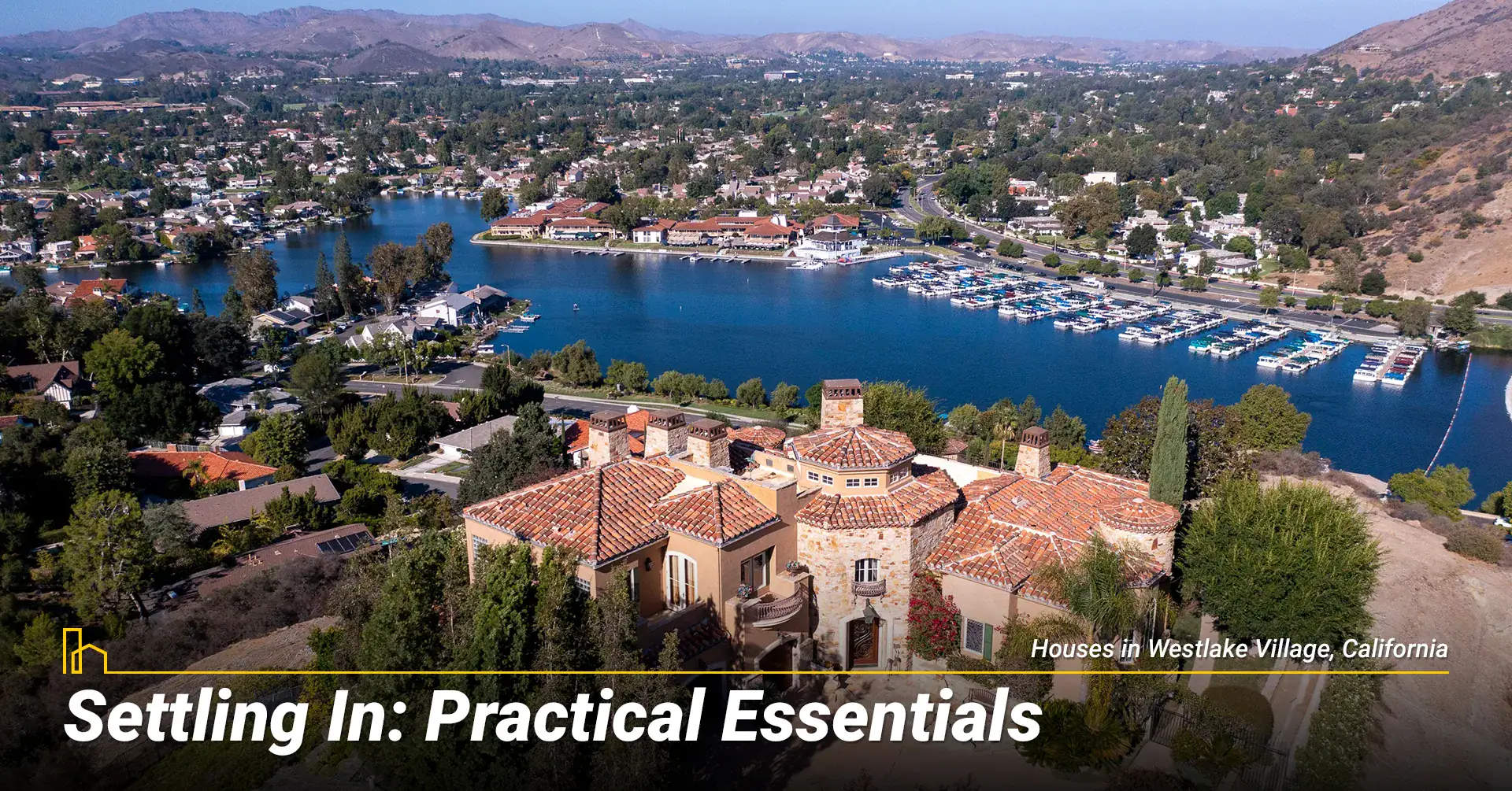
A. Utilities and Services Setup
California offers a mix of public and private utility providers with costs generally higher than national averages due to renewable energy commitments.
Utility/Service | Provider Type | Typical Cost | Notes |
|---|---|---|---|
| Electricity | Public/private | $0.30/kWh | Renewable energy focus |
| Water | Municipal/regional | $50–$150/month | Drought surcharges possible |
| Internet | Private | $50–$100/month | Multiple options available |
B. Legal Requirements and Documentation
Vehicle registration and driver’s license requirements are strictly enforced in California with specific deadlines.
Requirement | Deadline | Required Documents | Estimated Cost |
|---|---|---|---|
| Vehicle Registration | 20 days | Title, insurance, smog certificate | $50-200 |
| Driver’s License | 10 days | ID, SSN proof, residency proof | $39 |
| Voter Registration | ASAP | Same as driver’s license | Free |
C. Community Integration
Build your California social network by participating in local events, joining clubs based on interests, and utilizing online community resources. California culture emphasizes inclusivity, environmental consciousness, and community support.
9 Exciting Things to Do in Modesto, California
We’ll explore some of the best outdoor activities that Modesto offers, highlighting some of the city’s hidden gems and must-see attractions. Whether you’re a local or a visitor, you won’t want to miss the chance to experience the beauty and adventure of Modesto’s great outdoors…
9. California’s Unique Rules and Requirements
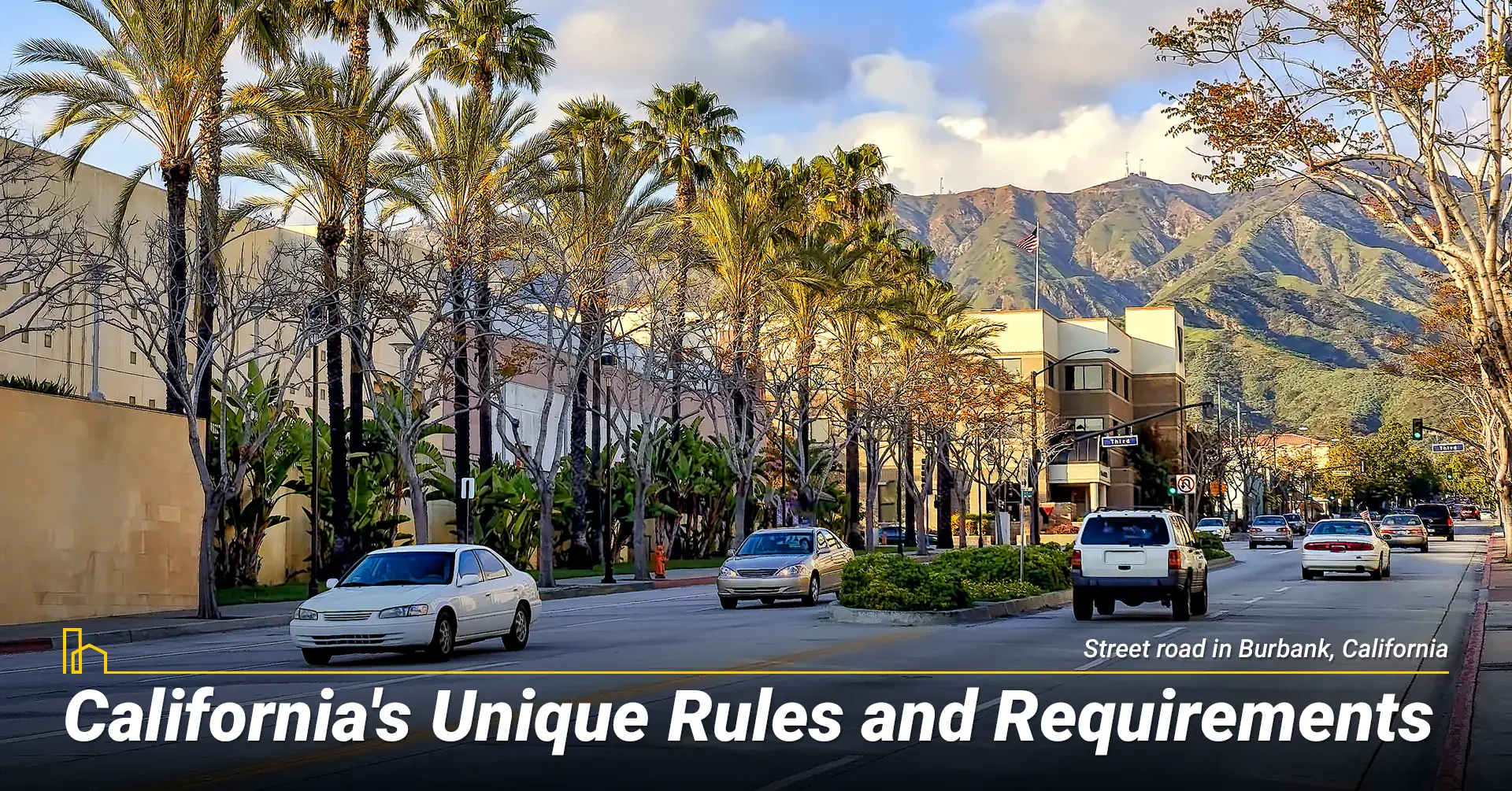
A. Vehicle Registration and Emission Standards
California has strict vehicle emission standards among the most stringent in the nation. You must register your vehicle within 20 days of becoming a California resident and obtain a California smog certificate. Some vehicle modifications allowed in other states may not be permitted in California.
B. Residency Documentation
For most purposes, you are considered a California resident after living in California for more than 6 months (183 days) out of a 12-month period. You can also establish residency by renting or buying a home, being employed in California, registering to vote, or having children attend California schools.
10. Financial Adjustment and Budgeting

A. Cost of Living Comparison
Living expenses in California are about 48% higher than the national average with housing costs 157% higher than national averages. Single persons should aim to save $10,000–$15,000 before moving, while families should target $20,000–$25,000 for a smooth transition.
Expense Category | Estimated Cost | Notes |
|---|---|---|
| Moving Costs | $1,500–$15,000+ | Distance and services dependent |
| Security Deposit | 1–2 months’ rent | Required for most rentals |
| Emergency Fund | 3–6 months’ expenses | Essential for high-cost areas |
Conclusion: Ready to make your move to California in 2025? This comprehensive relocation guide provides the foundation for a successful move to the Golden State and West Coast living. From understanding cost of living and job markets, to navigating practical moving steps and finding the best cities for your needs, California offers outstanding opportunities for individuals, families, and businesses seeking innovation, diversity, perfect weather, and a distinctive and unique quality of life. Whether you’re planning to relocate your household from Texas, New York, Florida, or any other state for better annual climate and career opportunities, the Golden State welcomes you with open arms and endless possibilities for building your American dream on the West Coast.
Recommended for you
Frequently Asked Questions About Moving to California
1. Do I Need a Car in California?
While public transit is available in major cities like San Francisco and Los Angeles, most residents find a car essential for daily life, especially in suburban and rural areas throughout the Golden State. Vehicle registration, insurance, and gas costs are higher than national averages, and California has strict emissions requirements.
2. How Safe Is California?
Safety varies by neighborhood and region throughout California. Many suburbs and small towns are very safe with low crime rates, while urban areas have mixed safety levels. Always research crime statistics for specific areas before choosing a location for your California relocation.
3. What Are the Biggest Challenges for California Newcomers?
Adjusting to the high cost of living represents the most common challenge for newcomers, particularly those moving from lower-cost states to California. Traffic congestion, housing shortages, and natural disaster risks including wildfires and earthquakes are also significant considerations.
4. How Much Money Should I Budget for Moving to California?
Moving to California costs vary significantly based on distance traveled, household size, and services selected. Budget for moving costs ranging from $1,500 to $15,000 or more, security deposits, utility setup fees, and emergency funds when planning your interstate move.
5. Is California Really as Liberal as People Say?
California is known for progressive politics; however political views vary by region throughout the state. Coastal cities tend to be more liberal, while inland and rural areas lean more conservative, providing a variegated political environment.
6. What’s the Weather Really Like in California?
California weather varies widely by region due to the state’s diverse geography and microclimates throughout the Golden State. Coastal areas enjoy Mediterranean-type climate year-round, while inland regions can be hot in summer and cool in winter, with Mountain areas seeing snow annually.
8 Key Steps to Buy a Manufactured Home in California
If you’re among the growing number of people looking to buy a mobile home in California, there are a few steps to take: Talk to owners of mobile homes, consider your priorities, learn about local laws and regulations, locate dealerships and sellers, explore available manufacturers, and consider local conditions. Then you can finance and insure your home and sign a contract…
7. What Steps Must I Take After Moving to California?
Essential California residency requirements include registering your vehicle within 20 days, obtaining a California driver’s license within 10 days, updating your address with banks and insurance companies, enrolling children in California schools, and registering to vote.
8. What Are the Pros and Cons of California’s High Taxes?
California’s high taxes fund robust public services including good schools, comprehensive healthcare programs, robust environmental protections, and extensive infrastructure, but can be a significant burden for some residents. The progressive income tax system means higher earners pay more, but most residents benefit from strong public services and environmental protections.
9. Do Californians Really Eat Avocado Toast Every Day?
Avocado toast is popular throughout California, but the state’s food scene is much more diverse and innovative. California’s agricultural abundance means fresh, local, and organic food is widely available, contributing to the state’s reputation for healthy and sustainable dining options.
10. How Do I Establish Residency in California?
You are considered a California resident after living in California for more than 6 months (183 days) in a year for tax purposes. You can also establish California residency by renting or buying a home, being employed in California, registering to vote in California elections, or having children attend California schools.
Table of Contents:
- 1. What Is It Really Like to Live in California?
- 2. Cost of Living & Affordability in California
- 3. Jobs, Economy, and Career Opportunities
- 4. Education Excellence in California
- 5. California Tax Structure
- 6. Best Places to Live in California: City-by-City Guide
- 7. Planning Your California Move: Step-by-Step Timeline
- A. 8-12 Weeks Before: Research and Financial Planning
- B. 6-8 Weeks Before: Documentation and Logistics
- C. 2-4 Weeks-Moving Day: Final Preparations
- D. After Arrival: Essential Settlement Tasks
- => Get the Relocation Guide & Checklist PDF — prepared for both Desktop and Mobile devices.
- California Vehicle Registration, Driver’s License & Voting Requirements for New Residents
- 8. Settling In: Practical Essentials
- 9. California’s Unique Rules and Requirements
- 10. Financial Adjustment and Budgeting
- Frequently Asked Questions About Moving to California
Chris Gorrie is a writer, editor, and digital marketer from San Diego, California. He earned an MA in English Literature from San Diego State, where he later published a monograph on W.B. Yeats and existential psychology. He taught college writing and is now Nonfiction Editor at Consequence Forum, a nonprofit exploring war and geopolitical violence. His poetry, fiction, and hybrid works have appeared in various literary venues globally. Chris has worked as a freelance copywriter for e-commerce and SaaS brands, held senior editorial roles in electronic media, and owns Text Sense, a content creation and digital marketing agency.
HOMEiA is a city guide site where visitors can find detailed information about communities of interest. HOMEiA’s City Guides, created in partnership with local writers and editors, are curated lists of the best, safest, and most affordable places to live. The guides feature the HOMEiA Score, a proprietary index that rates communities on such factors as housing costs, education, employment, etc.
HOMEiA.com aims to be the premier site for people planning to relocate, providing them with insightful content and connecting them with skilled real estate professionals.
We also empower real estate professionals to establish or strengthen their web presence by highlighting their experience, knowledge and achievements. If you’re selected to join our list of certified real estate professionals, you will distinguish yourself from your peers — and earn HOMEiA’s support.
If you believe in HOMEiA’s mission, please share our website with others.
Table of Contents:
- 1. What Is It Really Like to Live in California?
- 2. Cost of Living & Affordability in California
- 3. Jobs, Economy, and Career Opportunities
- 4. Education Excellence in California
- 5. California Tax Structure
- 6. Best Places to Live in California: City-by-City Guide
- 7. Planning Your California Move: Step-by-Step Timeline
- A. 8-12 Weeks Before: Research and Financial Planning
- B. 6-8 Weeks Before: Documentation and Logistics
- C. 2-4 Weeks-Moving Day: Final Preparations
- D. After Arrival: Essential Settlement Tasks
- => Get the Relocation Guide & Checklist PDF — prepared for both Desktop and Mobile devices.
- California Vehicle Registration, Driver’s License & Voting Requirements for New Residents
- 8. Settling In: Practical Essentials
- 9. California’s Unique Rules and Requirements
- 10. Financial Adjustment and Budgeting
- Frequently Asked Questions About Moving to California





















































































































































